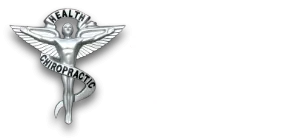Scottsdale
Chiropractic
Origins
Spinal manipulation has a long history in many cultures but Daniel D. Palmer is the founder of modern chiropractic theory, dating back to the 1890s. A grocer and magnetic healer, he applied his knowledge of the nervous system and manual therapies in an unusual situation. One renowned story concerns Harvey Lillard, a janitor in the office where Palmer worked. The man had been deaf for 17 years, ever since he had sustained an injury to his upper spine. Palmer performed an adjustment on a painful vertebra in the region of the injury and Lillard's hearing was reputedly restored. Palmer theorized that all communication from the brain to the rest of the body passes through the spinal canal, and areas that are poorly aligned or under stress can cause physical symptoms both in the spine and in other areas of the body. Thus the body has the innate intelligence to heal itself when unencumbered by spinal irregularities causing nerve interference. After his success with Lillard, other patients began coming to him for care, and responded well to adjustments. This resulted in Palmer's further study of the relationship between an optimally functional spine and normal health.
Palmer founded the first chiropractic college in 1897. His son, B. J. Palmer, continued to develop chiropractic philosophy and practice after his father's death. B. J. and other faculty members were divided over the role of subluxation in disease. B. J. saw it as the cause of all disease. The others disagreed and sought a more rational way of thinking, thus broadening the base of chiropractic education. From 1910-1920, many other chiropractic colleges were established. Other innovators, including John Howard, Carl Cleveland, Earl Homewood, Joseph Janse, Herbert Lee, and Claude Watkins also helped to advance the profession.
The theories of the Palmers receive somewhat broader interpretation today. Many chiropractors believe that back pain can be relieved and health restored through chiropractic treatment even in patients who do not have demonstrable subluxations. Scientific development and research of chiropractic is gaining momentum. The twenty-first century will likely see the metaphysical concepts such as innate intelligence give way to more scientific proofs and reform.
Many people besides the Palmers have contributed to the development of chiropractic theory and technique. Some have gone on to create a variety of procedures and related types of therapy that have their roots in chiropractic, including McTimoney-Corley chiropractic, craniosacral manipulation, naprapathy, and applied kinesiology .Osteopathy is another related holistic discipline that utilizes spinal and musculoskeletal manipulation as a part of treatment, but osteopathic training is more similar in scope to that of an M.D.
